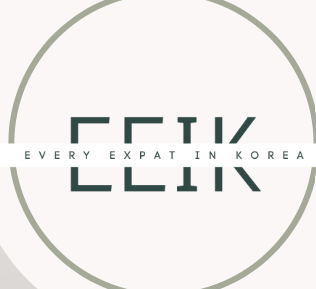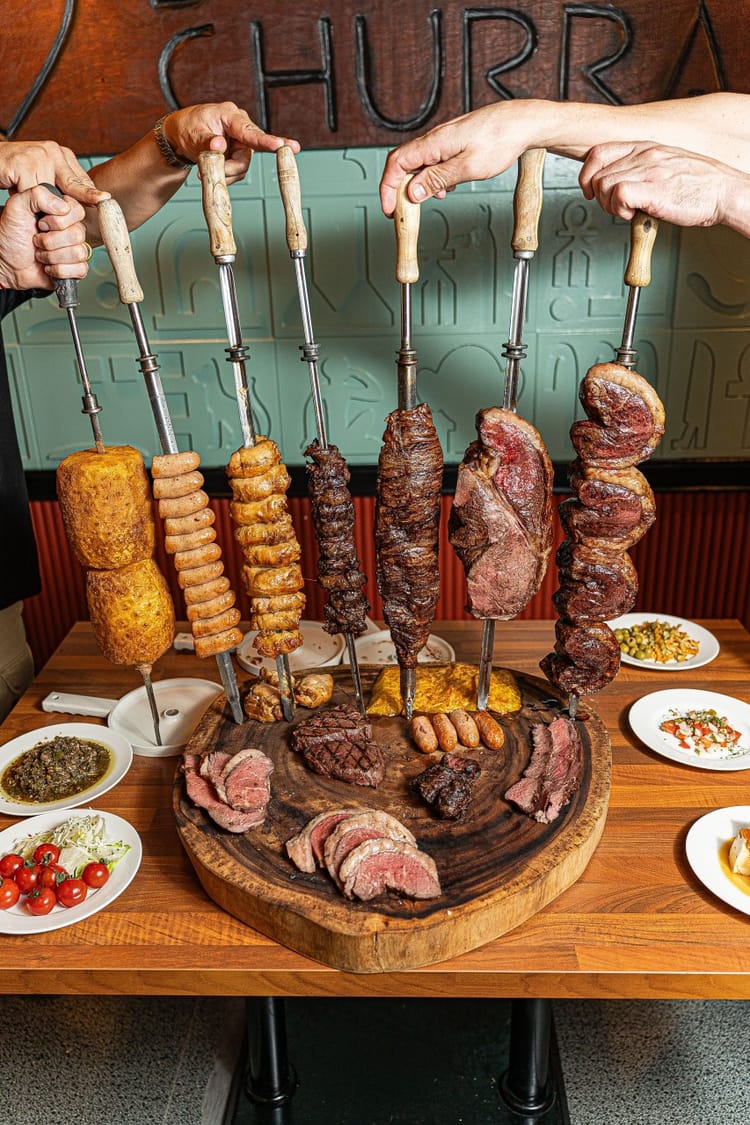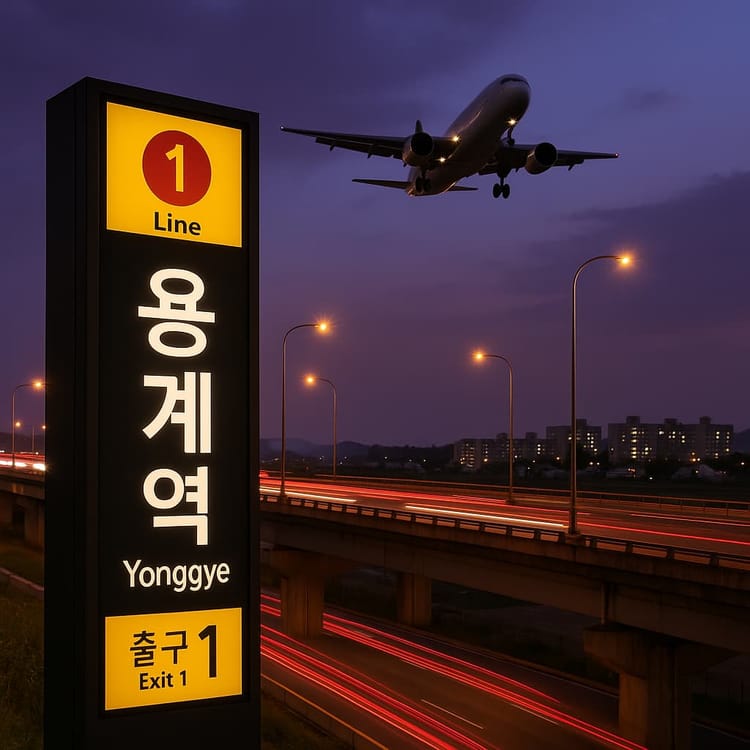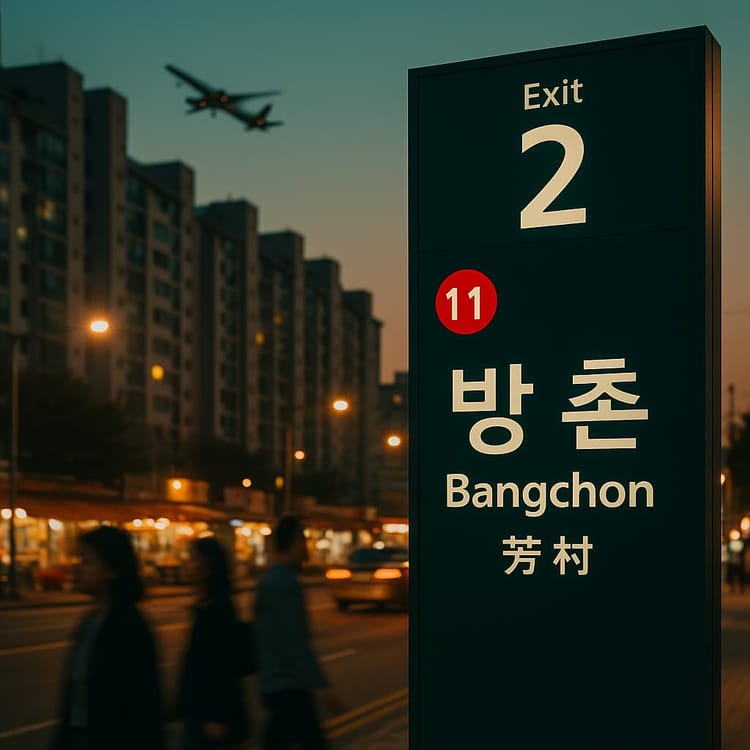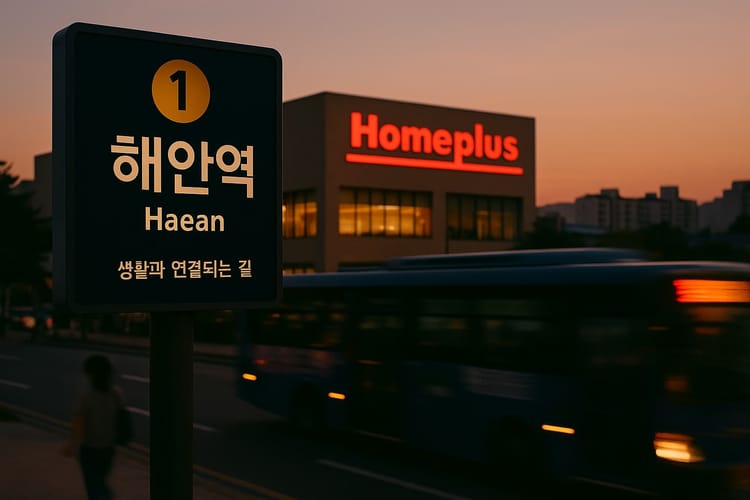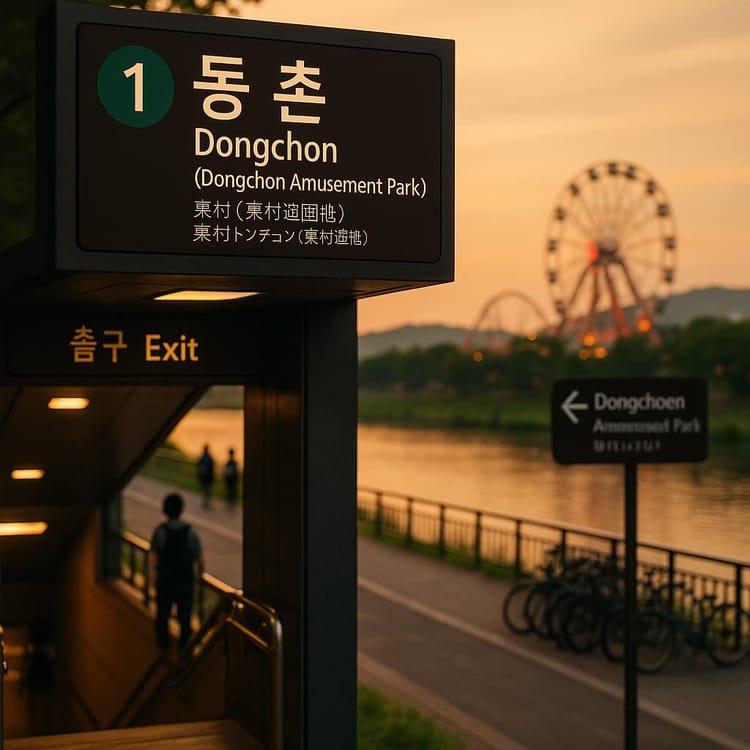Dongseong-ro: Daegu’s Historic and Commercial Center
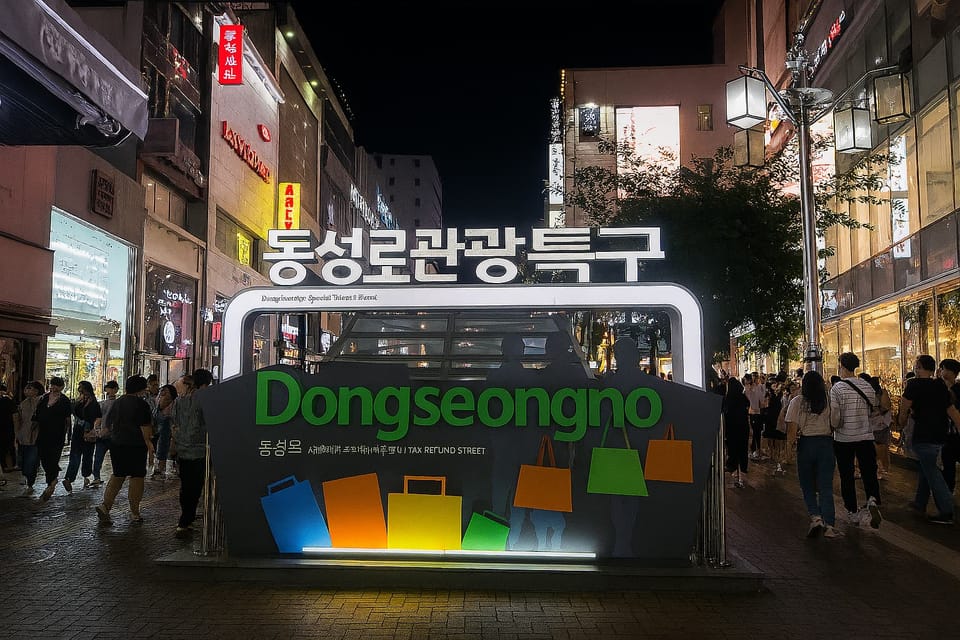
Dongseong-ro is exploding with nightlife and retail in 2025 — thanks to its new Tourism Zone status. Here’s why locals and tourists pack it every weekend.
Dongseong-ro (동성로) is the central commercial district of Daegu and one of the most recognizable pedestrian zones in South Korea. It functions as a dense corridor of retail, nightlife, youth culture, and civic landmarks.
The name refers both to the official street and the surrounding area, including Samdeok Rodeo Alley, underground malls, and historic intersections near Gukchae-bosang Memorial Park. The district has undergone several transformations since the 20th century and was officially designated a tourism zone in 2024.
This guide documents its development, public spaces, businesses, subzones, and historical role in Daegu’s urban identity.
Overview & Definitions of Dongseong-ro
Dongseong-ro Street refers to both an official road in Jung-gu, Daegu and a widely recognized downtown district encompassing the surrounding commercial, cultural, and nightlife zones. It is commonly used to refer not just to the literal stretch of road but to the broader urban space that includes underground malls, adjacent alleys, event plazas, and retail clusters. As a name, Dongseong-ro carries layered meaning. Used in city planning, tourism maps, and local vernacular to indicate the heart of Daegu’s commercial activity.
Historically, Dongseong-ro Street served as a civic and administrative spine during the Japanese colonial period and evolved into a symbol of modern Korean consumer culture by the late 20th century. It continues to function as a pedestrian-first zone, public gathering space, and transit-oriented retail environment.
Naming Variants (동성로, Dongseongro, Dongseongno)
Dongseong-ro is spelled and referenced in multiple ways across public signage, maps, and online searches. Understanding these variants is essential for navigating both physical and digital references to the area:
- 동성로 (Dongseong-ro): This is the official Korean spelling, using “로” as the suffix meaning “road.” It is the correct term for use in addresses, subway maps, and government materials.
- Dongseong-ro: This romanized form follows the Revised Romanization of Korean (RRK) system and is used in most official English-language documents, navigation apps, and road signs.
- Dongseongro / Dongseongno: These non-hyphenated versions appear frequently in search queries, blog tags, social media captions, and legacy English websites. While less precise, they reflect how many locals and tourists type the name informally, especially when searching on mobile devices.
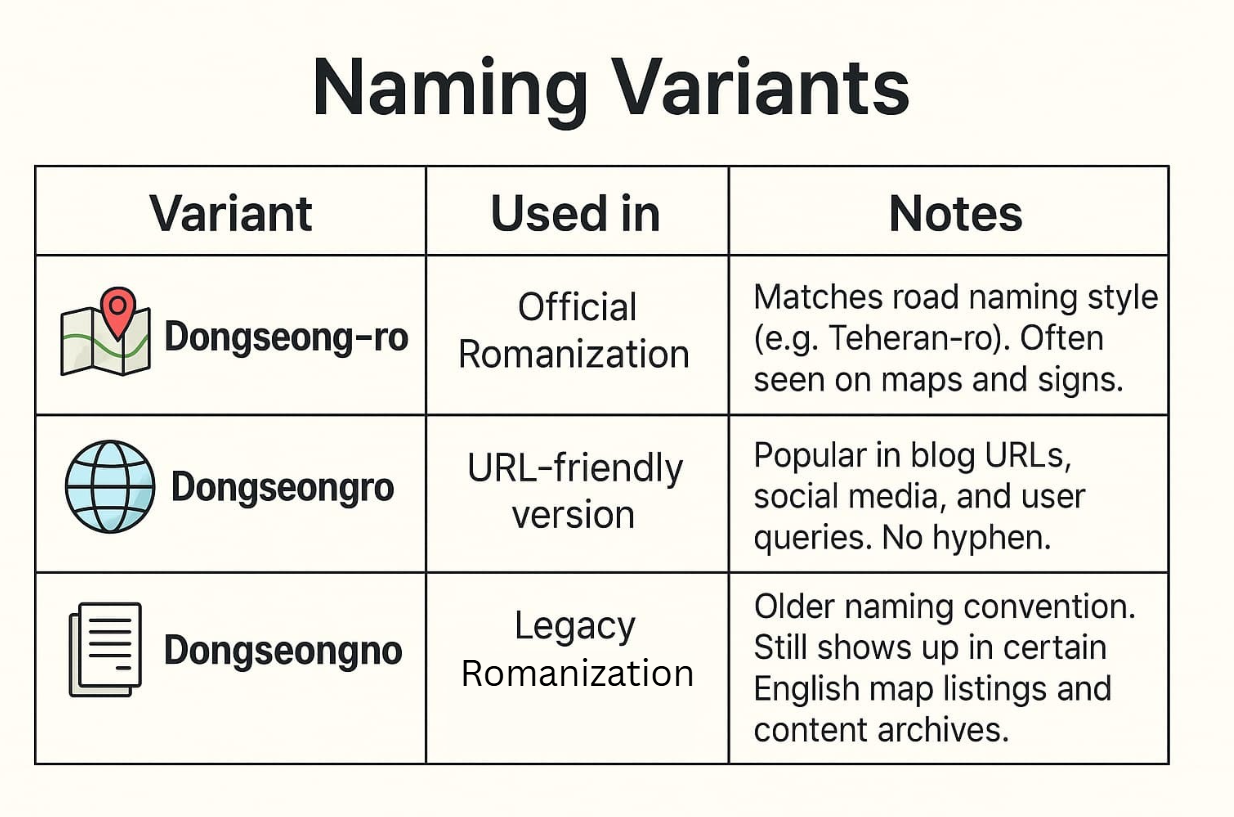
All variants ultimately refer to the same geographic and cultural zone.
Etymology & Romanization of Dongseong-ro
The name Dongseong-ro (동성로) translates directly as “Eastern Fortress Road”. It originates from the historic outer wall (성, “seong”) that once defined the eastern boundary of Daegu’s old town center. The road followed part of this defensive line and retained its orientation-based name as the city expanded outward in the early 20th century.
- 동 (Dong) = East
- 성 (Seong) = Fortress
- 로 (Ro) = Road
The naming reflects a common pattern in Korean urban development where key roads were named after the city gates or fortress directions (e.g. Namdaemun-ro in Seoul or Dongseong-ro in Daegu). Though no wall or gate remains today, the name preserves that spatial memory of Daegu’s historical layout.
Romanization Evolution of Dongseong-ro
The modern form “Dongseong-ro” follows the Revised Romanization of Korean (제3차 표준국어대사전, 2000), which was adopted by the South Korean government to standardize the transliteration of Korean into the Latin alphabet. Prior to that, systems like McCune-Reischauer rendered names differently, sometimes producing spellings like “Tongsŏng-no” or “Tongsong-ro” in older maps and English-language materials from the 1980s–1990s.
In street-level usage and online platforms:
- Dongseong-ro is the dominant form in navigation, Naver Maps, and government signage.
- Dongseongro (without a hyphen) is more common in social media hashtags and user-generated content.
- Dongseongno occasionally appears in older documents or user input fields, especially when using transliteration engines without strict hyphenation.
These spelling variations persist due to differences in user familiarity, system inputs, and platform defaults. Especially on mobile devices or for international visitors using older GPS systems.
Geography & Administrative Context
Dongseong-ro is located in Jung-gu (중구), Daegu’s central administrative district. It forms the core of downtown Daegu, bounded by major transit lines, historic public parks, and longstanding civic institutions. Although “Dongseong-ro” refers officially to a road, the term has grown to describe a broader urban district encompassing shopping streets, alley networks, underground malls, youth zones, and cultural facilities.
Relation to Jung-gu District
Dongseong-ro lies entirely within Jung-gu, the smallest and oldest administrative district in Daegu. Jung-gu functions as the city’s municipal and symbolic center — home to the Jung-gu District Office, courts, banks, cultural venues, and major infrastructure including Banwoldang Station and city bus hubs.
The expansion of Dongseong-ro as a retail district paralleled Jung-gu’s growth as Daegu’s main government and finance zone throughout the 20th century. Today, many government-led urban development projects in Jung-gu still identify Dongseong-ro Street as a high-priority axis for commercial revitalization and tourism planning.
Notable civic sites located in or adjacent to Dongseong-ro include:
- Daegu Jung-gu Office
- Gyo-dong Police Station (교동 파출소)
- 2.28 Democracy Central Park (2·28 중앙공원)
- Gukchae-bosang Memorial Park (국채보상운동기념공원)
- Daegu Modern History Museum (근대역사관)
These sites reinforce Dongseong-ro’s role not just as a retail destination but as a civic and symbolic core of Daegu.
Physical Boundaries & Adjacent Landmarks of Dongseong-ro
While Dongseong-ro lacks a fixed administrative boundary, it is generally understood to span a pedestrian corridor of ~1.5 km, beginning near CGV Banwoldang and extending north past the intersections around Gukchaebosang Memorial Park.
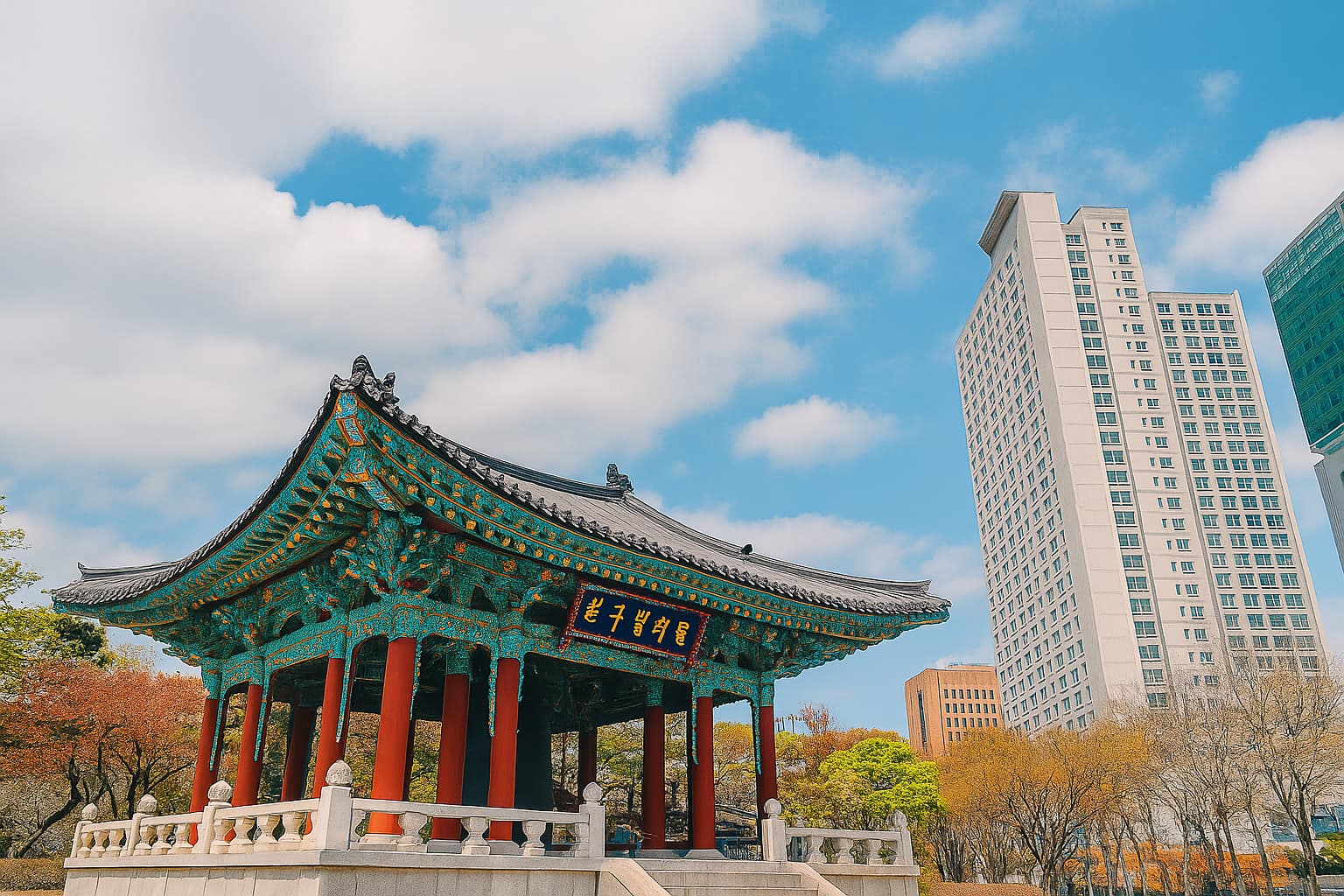
Key landmarks that define the perimeter of Dongseong-ro include:
| Landmark | Directional Anchor |
|---|---|
| Banwoldang Station (Exit 13) | Southern entry point |
| CGV Daegu / Metro Center Mall | Central node |
| 2.28 Democracy Park | Near eastern terminus |
| Gukchae-bosang Memorial Park | Northeast junction zone |
| Spark Land | Eastern flank |
| Samdeok Rodeo + Hof alleys | East-side nightlife spine |
| Jungang-ro Station (Exit 1) | Southern alternate access |
The “pedestrian zone” designation, along with regular street closures on weekends, emphasizes Dongseong-ro’s transformation from a traditional road to a walkable public space.
Subway & Transport Access
Dongseongno is one of the most transit-connected districts in Korea, anchored by two major subway lines and frequent bus service. While it does not have a subway station named “Dongseong-ro,” it is accessible from several nearby stations:
- Banwoldang Station (Lines 1 & 2): Most used entry point with exits 10 through 14 leading directly into the shopping area
- Jungang-ro Station (Line 1): Quieter access from the south with Exits 1, 2, and 3 opening onto side streets
- Cheongna Hill Station (Lines 2 & 3): Northwest access — 8–10 minutes on foot
- Daegu Station (KTX and subway): 15–20 minutes walk or 2 stops via Line 1
City buses and express routes also run along the perimeter roads, and taxis regularly drop off passengers at the Banwoldang CGV stand or Metro Center entrances.
Historical Development
Early 20th‑Century Urban Formation
Dongseong‑ro began to take shape in the early 1900s following the forced demolition of Daegu’s eastern city walls. In 1907, Park Jung‑yang, a pro-Japanese governor of Daegu, oversaw the demolition of the fortress walls, and the vacated space became a broad avenue—Dongseong‑ro—that quickly transformed into a vibrant urban axis.
Initially subdivided into three blocks, Dongseong‑ro 1‑ga, 2‑ga, and 3‑ga, the area emerged as a hub for small markets, artisan workshops, and teahouses. The Dongseong‑ro 2‑ga area formed around refugee settlements during and after the Korean War, later welcoming establishments like bakeries, cafés, and restaurants by the 1960s.
Under Japanese colonial administration, Daegu was reorganized in 1914, reassigning street and town names nationwide. Dongseong‑ro 2‑ga was formally designated during this period and became an important legal neighborhood (법정동) tied to Jung-gu. Despite ongoing colonial exploitation in the region, the street’s formalization marked its shift from rural outskirts to planned urban infrastructure aligned with Daegu’s railway-based growth strategy .
By the 1920s and ’30s, the area hosted early modern urban features: bookshops, cinemas, department stores, and a growing population of both Japanese and Korean residents. Notable early businesses anchored along the street included Daekyo Bookstore (大僑書店, 1920) and Shochiku Cinema (松竹映畵劇場, 1921).
Post‑war Expansion (1950s–1970s)
Dongseongno’s evolution accelerated after the Korean War as displaced families and refugees repurposed the once quiet street into a thriving commercial sector. With the influx of war survivors, many informal businesses, such as small grocery stalls, barbers, pharmacies, stationery shops, and food pushcarts, clustered along the road. This activity laid the foundations for a pedestrian‑oriented commercial corridor that became Daegu’s economic heartbeat.
By the early 1960s, the site saw the emergence of Gyodong Market, which officially opened in December 1952 and became a hub for imported goods and food during the post-war reconstruction phase. Known initially for selling US military surplus (earning it the local nickname “Yankee Market”), it served as a complementary zone to Dongseong‑ro’s retail core .
Over the 1960s and 1970s, Dongseong‑ro solidified its position as Daegu’s leading shopping district. It became known for affordable necessities and daily wear, but also began to feature more structured storefronts and storefront signages, including the beginnings of street lighting and evening hours. Ethnic alleys dedicated to specific trades emerged: one for women’s fashion called Yasi‑golmok (literally “fox alley,” a local term for stylish women), and across it, Neukdae‑golmok for men's clothing. The area was also dotted with food alleys offering tteokbokki, soju, and fried snacks late into the night.
Dongseongno remained Daegu’s top commercial district for over four decades following the war. Reportedly, as many as 500,000 people passed through daily during peak periods, making it one of the busiest shopping zones among South Korea’s major cities .
During this era, pedestrian spaces expanded, and weekend strolls became a social phenomenon. The street’s vitality attracted city planners’ attention, paving the way for future modernization. However, the unregulated growth of sidewalk vendors prompted occasional municipal crackdowns aimed at reducing congestion and raising urban sanitation standards.
1980s–1990s Fashion & Franchises Boom
By the 1980s, Dongseong-ro had transformed from a postwar recovery corridor into a dynamic, trend-driven commercial strip. Urban youth culture, the rise of domestic fashion brands, and an influx of international franchises turned the area into one of Korea’s busiest shopping and leisure zones outside of Seoul.
Emergence of Dongseong-ro as a Fashion Mecca
The 1980s marked the golden age of domestic fashion retailers. Local brands like XN Milano opened signature multi-story stores in Dongseong-ro, attracting style-conscious shoppers from all over Gyeongsangbuk-do. This retail corridor earned comparisons to Seoul’s Myeongdong and Shinchon, often serving as a testbed for national retail campaigns.
The Dongseong-ro street layout encouraged strolling, browsing, and evening socializing — creating a new type of downtown culture centered not on necessity, but aspiration.
The Entry of International Franchises
Around this time, American-style fast dining arrived in full force:
- Subway Sandwiches opened its first Daegu location near Dongseongno around 2004, gaining some initial popularity with urban youth at the time. But it didn't take root and eventually contracted until disappearing from downtown, causing foreigners to have to rely on only 3 locations throughout Daegu, one that still survived in Nam-gu, another at Yeungnam University and one located on Camp Walker and accessible only to USFK personnel, their families and guests eligible to get on the base or be escorted onto the base. Subway later saw a resurgence in the mid-2010s, this time being fully embraced by young Koreans, with even 24‑hour outlets returning to the area and line-ups running outside the door.
- Pizza Hut was among the earliest pizza and casual dining franchises in the region. Pizza Hut’s expansion in South Korea began in the mid-1980s.
- Family-style and entertainment-oriented restaurants such as TGI Friday’s, Bennigan’s, Outback, VIPS, and BIBIBAP also launched locations along Dongseong-ro, enhancing its appeal as an international-style dining neighborhood. TGI Friday’s opened multiple branches in Daegu—including in Jung-gu’s downtown area—in the early 2000s. On February 5, 2025, its South Korean operator MFG Korea announced that all locations would close by March 2025, citing a national shift away from casual dining and the company’s strategic focus on other brands. Bennigan’s opened a signature location in downtown Daegu, situated near what was once the Downtown Stage plaza on Dongseong‑ro. It operated through the early 2000s before quietly closing in the early 2010s, following declining foot traffic and shifting market dynamics.
• Street Food, Soda Stalls, and Night Alley Culture
From the late 1980s through early 2000s, weekend street vendors—selling tteokbokki, soju, fried snacks, soda, and BBQ—filled the pedestrian zone. The city cleared these out around 2005 to make space for street renovation, Metro Center integration, and formal vendor permits.
• Retail Shift and Media Image
During this boom, Dongseong-ro became nationally recognized for flash sales, fashion weeks, and sidewalk displays. Its reputation as Daegu’s answer to Seoul’s Myeongdong echoed strongly in media coverage, capturing a youthful energy and regional prestige.
First Modern Hotels & Downtown Stage
Dongseong-ro was now shifting rapidly from a traditional street into a modern urban hub. Reconstruction efforts around Jung-gu sparked a wave of commercial development, including the construction of the city’s first large-scale hotels, cinemas, and department stores.
Novotel Ambassador Daegu, often mistaken as an early player, actually opened in 2008 as part of the Daegu City Center complex near Jungangno. Its eventual closure in 2021 reflected a wider contraction of international hospitality in central Daegu. The shift further entrenched Dongseong-ro’s identity as a hub for youth culture, nightlife, and local commerce over business tourism.
A pivotal landmark of this era was the Downtown Stage (시내중앙무대), built in May 2009 as part of Dongseong-ro’s urban redesign. The elevated, 7 m stage hosted busking, festivals, civic gatherings, and televised events. However, by the early 2020s, it had become costly to maintain (₩10M+ annually) and technologically outdated. In November 2022, the stage was dismantled and replaced with the “Dongseong-ro 28 Art Square”, a flatter, more adaptable public plaza incorporating LED art columns, despite concerns that it reduced the area’s function as a "democratic gathering space" .
Banwoldang Underground Mall & Metro Center Integration
To fully grasp Dongseong-ro’s connectivity and commercial evolution, it’s essential to look at Banwoldang Station’s underground mall network, which integrates with the Dongseong-ro corridor.
2005 Launch of Metro Center & Metro Plaza
- With the opening of Daegu Metro Line 2 in October 2005, the city simultaneously opened two major underground malls: Metro Center and Metro Plaza.
- Metro Center, also known as Banwoldang Underground Shopping Center, spans three basement levels directly beneath Banwoldang Station. It houses approximately 403 shops, covering around 13,089 ㎡ of retail space and another 28,211 ㎡ of land area.
- Metro Plaza, positioned east toward Bongsan, added another 138 shops and approximately 4,319 ㎡ of retail area.
Spatial Link with Dongseong-ro
- These malls connect seamlessly to major surface facilities: Daegu Hyundai Department Store, Dong-A Department Store, Metro Center “fountain plaza,” and CGV Banwoldang.
- They extend about 840 meters underground, linking more than 40 official exits (with up to 60 including unnumbered corridors) and dispersing foot traffic across Jung-gu via both Metro Center and Metro Plaza.
Function and Community Role
- Originally designed to absorb and redistribute pedestrian flow following Line 2’s addition, the underground complex was meant to increase retail density while alleviating surface congestion.
- Metro Center features a “Meeting Square” (fountain plaza) that hosts busking performances and public events, serving as a sheltered communal space during inclement weather .
- Retail categories there range from pharmacies and beauty stores to cafés, pet shops, nail salons, and gift counters, appealing to both seniors and youth.
Recent Governance Shifts
- In March 2025, municipal control shifted from private operators to the Daegu Public Facilities Management Corporation, following the expiration of a 20-year private operating contract .
- This transition triggered debate between shop owners and the city over lease renewals, rent conditions, and tenant rights. Many store owners report feeling pressured by rising rents and regulatory demands under new public lease terms.
Dongseong-ro Renaissance & Tourism Designation (2024–25)
Designation as Daegu’s First Tourism Special Zone (July 22, 2024)
In a milestone move, Daegu designated Dongseong-ro and the nearby Yakryeongsi area (totaling 1.16 km²) as its first-ever “Tourism Special Zone” (관광특구) on July 22, 2024. The decision came after the area surpassed the required 100,000 annual foreign visitors, reaching approximately 270,000 in 2023. This official status enables enhanced marketing, foreign-language signage, radio tax exemption for purchases, improved tourist services, and access to low-interest, central government investment funds.
Local business associations anticipate this designation will rejuvenate the district, and the city is exploring infrastructure improvements including foreigner-friendly travel centers with luggage storage, expanded tour guide services, and streamlined retail experiences.
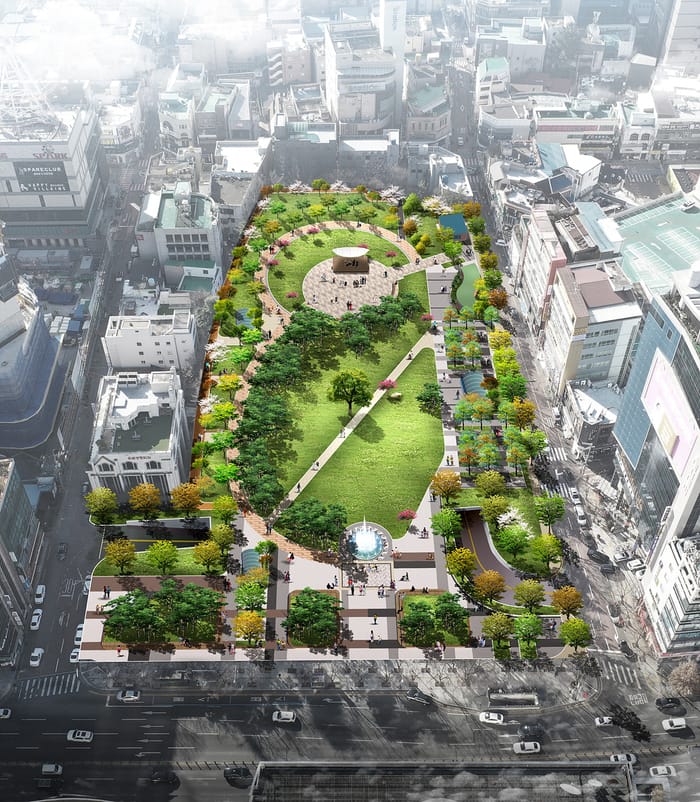
Dongseong-ro Renaissance Project: A Five-Year Revitalization (2024–2028)
The Dongseong-ro Renaissance Project officially launched in May 2024, earmarking KRW 6 billion over five years (through December 2028) to restore vitality to the district. This initiative is supported by a broader KRW 9.5 billion investment package announced in December 2024.
Core Objectives:
- Cement Dongseong-ro as a cultural hub and youth destination
- Engage local small businesses, including startups and pop-ups
- Expand tourism infrastructure and foreigner-friendly experiences
- Redesign street spaces for visual impact, safety, and flow
Major measures include:
- Establishing the “Dongseong-ro PASS” culture-tour mobile platform
- Ongoing pop-up shops and youth marketplace events
- “Vic D” branding and mascot rollout, including experiential merchandise
- Monthly “Dessert Festival” and cultural programming aimed at East Asian and Western tourists
- Media facades, street performance stages, and thematic street art zones
City officials project 920,000 foreign visitors by 2035, up from 250,000 in 2023.
Infrastructure & Public Space Redesign
This project is reshaping the physical and experiential landscape of Dongseong-ro:
- Redevelopment around old central police station into a public cultural plaza with performance and street art zones
- Renovations of key sites (“ex-Daegu Department Store”) with media facade installation for art and advertising displays
- Reductions in street clutter: removal of unnecessary overhead signs for visual clarity
- Temporary weekend pedestrianization and slower vehicle zones to prioritize shopping and foot traffic
- Introduction of European-style outdoor café lining, especially around Gukchae-bosang Memorial Park
Cultural Programming & Business Support
Multiple culturally significant programs have been launched, targeting youth, entrepreneurs, and tourists:
- Monthly “Dongseong-ro Music Festa”, youth cultural festivals, and nightlife events
- Designated “Club Day Tours” for the Korean club culture experience
- Pop-up tourism booths offering foreign-language information with luggage storage
- Support for fledgling businesses: storefront consulting, digital marketing seminars, and startup incubator programs
- “Dessert Fests” scheduled in 2024 and 2025, alongside expanded foreign-language guided tours
Outlook & Challenges Ahead
Officials forecast that with current momentum, Dongseong-ro will host upwards of 900,000 foreign visitors by 2035, driven by its tourism status and planned infrastructure. But challenges remain:
- Managing artist displacement, rising rents, and commercial homogenization
- Balancing traditional vendor culture with modernization goals
- Engineering infrastructure improvement without disrupting active businesses
- Sustaining youth interest beyond festival launch periods
The next 12–24 months will be decisive. As the tourism zone rollout enters execution mode, success will depend on community engagement, vibrant programming, and sensible urban design.
Cultural & Entertainment Districts
Dongseong-ro’s reputation extends far beyond shopping. It functions as Daegu’s primary stage for youth culture, nightlife, public events, and subzone specialization. This section explores its major cultural districts and their evolving roles.
Central Commercial Spine
The core of Dongseong-ro is its pedestrianized boulevard—a hybrid of shopping arcade and daytime cultural venue:
- Flagship stores, including Olive Young, StyleNanda, H&M, and Zara, line the central stretch, anchoring the retail economy.
- Sidewalk buses, LED screens, and video walls project brand visuals and cultural content.
- Weekend street performers—solo singers, K-pop dance crews, and acoustic bands—are fixtures near the Metro Center fountain plaza.
- Frequent small-scale festivals occur, such as the "Dessert Festa" (국내 관광객 대상 연례 행사), rotating through vendor booths and pop-up cafés.
- The area is particularly vibrant around census-core zones near Exits 12–14, where public seating, lighting art installations, and café terraces converge.
This central spine serves daily retail, evening promenade, and intermittent cultural staging.
Samdeok Rodeo (삼덕 로데오)
Situated east of the main street, Samdeok Rodeo Alley has earned recognition as Dongseong-ro’s unofficial nightlife alley:
- Home to dozens of indie clubs, dance lounges, karaoke bars, and “HOF” beer pubs.
- Main artery is Samdeok-ro, intersecting with smaller alleys housing speakeasy-style bars and themed cafés, such as Caliente, La Costa, Varanasi Indian Restaurant and Nazar Kebab.
- Since the 2000s, it’s catered heavily to university-aged crowds and alternative music fans.
- In recent years, the scene has been influenced by the Tourism Special Zone, with government-sponsored programs like “Club Day Tours” that package club visits for foreign visitors.
Samdeok Rodeo represents a generational plurality—where mainstream meets underground in a shifting urban nightlife mosaic.
Yasi-golmok (야시골목) – Historical Night Street
A key component of Dongseong-ro’s nostalgia, Yasi-golmok refers to narrow back alleys that gained popularity in the 1980s as evening retails zones:
- Known for fashion boutiques, cassette tape shops, stationery stores, and late-night eateries.
- The informal economy addressed young women’s needs—hence the moniker, “Yasi” (stylish).
- By the 2000s, many of these shops had moved on due to gentrification and redevelopment. Few remain, their traces found in boutique cafés and signboards.
Yasi-golmok has mostly faded from memory, but its cultural imprint remains in the district’s youthful character.
Hof Alleys & Gourmet Pubs
Just off the main strip are the Hof alleys, named after the popular Korean beer-and-snack format:
- Concentrated near Exits 15–18, these alleys are lined with public-house style venues offering fried chicken, beer, and anju (side dishes).
- Catered to both locals and visitors, these alleys remain active until 1–2 AM.
- In 2022, a city initiative to standardize awnings, lighting, and signage improved consistency, but also raised rent concerns among smaller operators.
Spark Land (Indoor Entertainment Complex)
Opened in 2019, Spark Land sits at the eastern edge of the Dongseong-ro area :
- The building spans four floors offering arcades, VR rooms, family-style entertainment, and music zones.
- Popular with families and youth groups seeking indoor leisure options, especially during winter.
- Though separate from the pedestrian core, it’s increasingly integrated into tourism mapping and now linked via shuttle carts during the weekend tourism initiatives.
Outdoor and Street Events
Dongseong-ro frequently becomes an event space for:
- Seasonal festivals: Winter Light Festival (Nov–Jan), Children’s Play Market, “Club Day Tours.”
- Public demonstrations and rallies: Activism near 2.28 Democracy Park has occurred during anniversaries or policy protests.
All are supported by city programming, though public demonstration planning is strictly regulated by Jung-gu district office.
Cultural Flights & Street Art
As part of the Renaissance Project, Dongseong-ro has seen:
- Art installations along sidewalks, often sponsored by universities or design collectives.
- Murals near 2.28 Park and Gukchae-bosang Memorial Park reflecting peace and civic identity.
- “Experience booths” for tourists that recreate consumer rituals—street tea brewing, hanbok try-on, K-pop photo zones.
These features blend commercial vibrancy with curated cultural immersion.
Infrastructure, Parks & Public Spaces
Dongseong-ro is not just a commercial corridor—it integrates key civic spaces and green zones that reflect both Daegu’s heritage and current urban planning priorities.
2.28 Democracy Central Park (2·28 중앙공원)
Geekly referred to as “2.28 Park,” this downtown green space commemorates the February 28, 1960 student uprising—a pivotal event leading to the April Revolution. Located on Dongseong-ro 2-gil near Jungang-ro Station, the park offers a small but meaningful relief point amid the city centre. It hosts memorial plaques and is recognized as a gathering space for ceremonial and civic activity.
Gukchae-bosang Memorial Park (국채보상운동기념공원)
Often called “National Debt Redemption Movement Park,” this 42,500 m² park lies northeast of Dongseong-ro and includes:
- Dalgubeol Grand Bell: an iconic bell rung annually for New Year’s celebrations
- Walking trails, landscaped gardens, and commemorative plaques honoring the 1907 debt redemption movement and its late 1997 revival
- Visitors describe it as a peaceful oasis providing a necessary break from Dongseong-ro’s bustle
The park is a core stop for free guided tours and is listed as one of Daegu's must-visit sites alongside Dongseong-ro.
Street Design & Pedestrian Infrastructure
Dongseong-ro benefits from both government-led urban upgrades and commercial partnerships:
- Street lighting and seating upgrades under the Renaissance Project
- Expanded pedestrian plazas near Metro Center and along main corridors
- Vehicle restrictions and weekend closures to emphasize foot traffic and cultural events
- Creative elements: QR-coded “info pillars,” wireless internet hotspots, and performance-ready walkways
Jung-gu Administrative & Civic Nodes
Strategically located off Dongseong-ro are:
- Jung-gu District Office, the administrative heart influencing city planning and event coordination
- Modern History Museum and Gukchae-bosang Park, local destinations for history and civic identity
- Bus stops and taxi stands cluster around these nodes, improving connectivity with regional transit
Surrounding Parks & Heritage Sites
Some additional nearby assets include:
- Dalseong Park: Located south along Jung-gu, this historic 1905 park contains reconstructed fortress walls, a zoo, and a pavilion—offering a parallel heritage experience
- Palgongsan Mountain (20 km north): Daegu’s spiritual icon and frequent K-tour broadcast subject, selected again in 2025 for Korea’s “100 Must-Visit Tourist Spots”
Public Transportation Integration
Dongseong-ro Street interfaces with surface and underground transportation:
- Multiple bus lines operate along Jungang-daero and Gukchaebosang-ro
- Bicycle racks and city bike stations offer first-mile access
- Taxi stands near Metro Center and CGV Banwoldang serve as pedestrian gateways
These combined elements—parks, mobility infrastructure, and civic nodes—play a central role in Dongseong-ro’s transformation into a pedestrian-first cultural destination.
Retail & Brand History
Dongseong‑ro has served as the testing ground and showcase for multiple waves of retail and dining trends—from local boutiques and casual Korean cafés to international franchises and youth-focused pop‑ups. This section charts its commercial evolution and brand turnover.
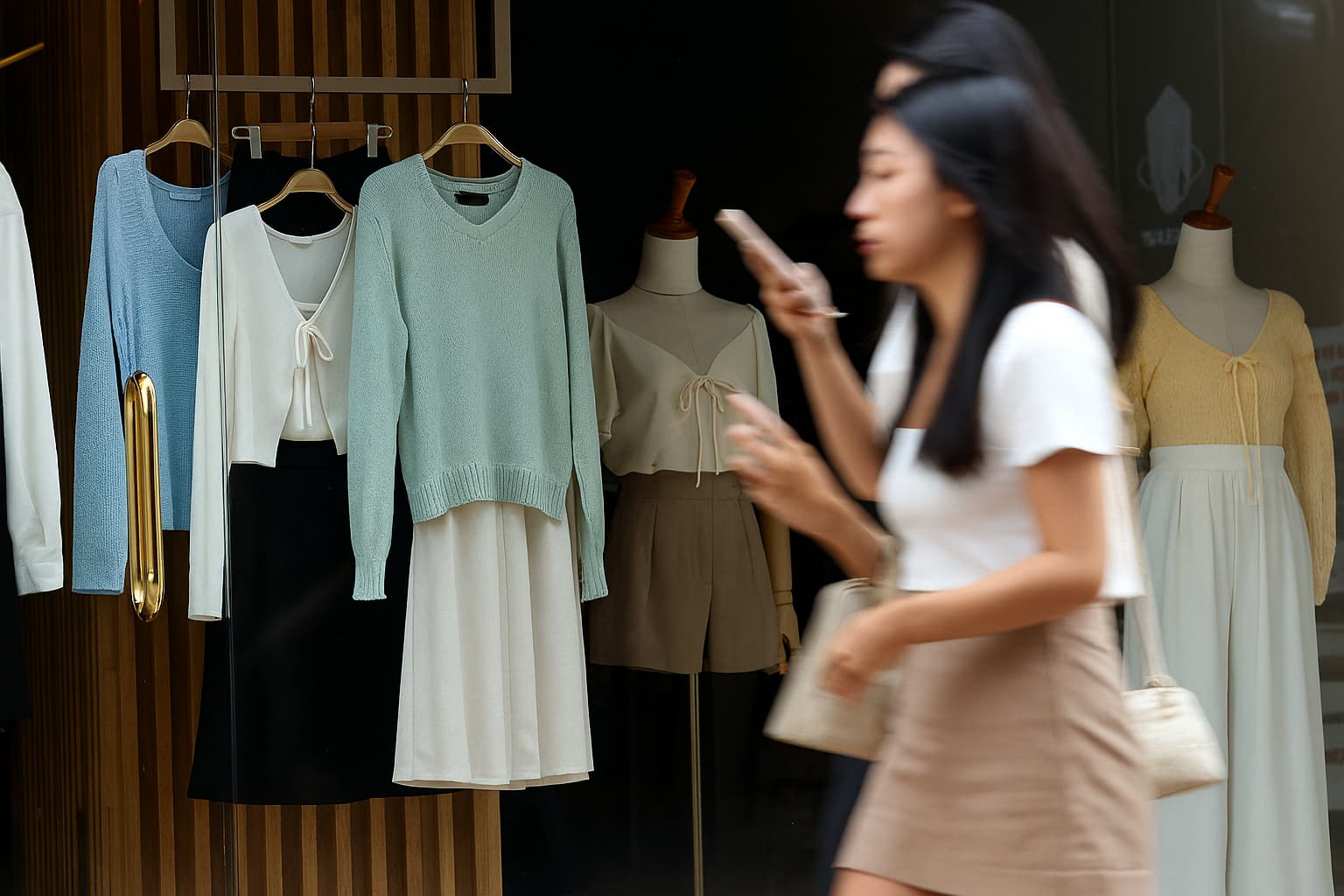
Boutique Fashion & Domestic Style (1980s–1990s)
- Emergence of XN Milano, Mixxo, Mindbridge, Bean Pole, and other domestic fashion labels anchoring Dongseong‑ro as an alternative to Seoul’s retail districts.
- Growth of Yasi‑golmok (stylish women’s alley) and Neukdae‑golmok boutiques—popular for affordable yet trendy clothing, down jackets, and stationery.
- Small, independent stores encapsulated the DIY and self‑expression movements of South Korea's "88 Generation."
First International Franchises (1990s–2000s)
- Pizza Hut introduced family-style dining in Daegu with outlets throughout Dongseong-ro in the mid‑1990s.
- Subway Sandwiches opened near downtown circa 2004—made sandwiches popular among students and young professionals.
- Mister Donut, Baskin Robbins, and Lotteria proliferated, shaping the district’s snack-time culture and reinforcing it as a go-to café zone.
American Casual Dining Era
- Bennigan’s opened near the Downtown Stage plaza in the early 2000s, offering sit-down American meals. It closed quietly in the early 2010s as dining tastes shifted.
- TGI Friday’s sustained downtown outlets across Jung‑gu up through the 2010s. These shuttered nationwide by March 31, 2025, citing a shift toward fast-casual models.
Brand Resurgence & Shift in Dining Trends (2010s–2020s)
- Subway re-entered in the mid‑2010s, including a 24‑hour branch near Banwoldang Station.
- Taco Bell (post-2010) joined alongside familiar QSR names to diversify the fast-food mix.
- Spark Land (2019) introduced family entertainment alongside dining options targeting teens and tourists.
- Mix of Korean fast-casual (like BBQ chicken pubs, tteokbokki cafes, and artisanal dessert shops) began to dominate, replacing big chains.
Underground Specialty Retail & Metro Center Shops
- Banwoldang Underground Mall / Metro Center houses over 400 specialty shops, ranging from cosmetics and skincare to phone accessories and vintage fashion.
- A wealth of streetwear boutiques, stationery shops, 24-hour convenience stores (7‑Eleven, GS25), pharmacies, and ArtBox have thrived underground—mirroring—but often outlasting—surface trends.
Fast-Fashion Retail & Rotational Stores
- Major brands like H&M, Uniqlo, Zara, Olive Young, and 8Seconds dominate surface-level retail, especially in the Exits 12–14 corridor.
- Seasonal pop-up stores, migrant retail lab markets, and youth-targeted stalls (e.g. youth accessories and phone-case brands) flourish under tourist-supported programming such as the Dongseong‑ro Renaissance Project.
Brand Lifecycle
| Era | Key Brands | Notes |
|---|---|---|
| Boutique era (1980s–90s) | XN Milano, Mixxo, Mindbridge | Small‑scale fashion, local youth empowerment |
| Global franchises (1990s) | Pizza Hut, Subway, Dunkin' Donuts, Baskin Robbins | Shift toward Western fast casual |
| Sit‑down dining (2000s) | Bennigan’s, TGI Friday’s | Casual dining staples, later exited 2010s–2025 |
| QSR resurgence (2010s) | Subway (returns), Taco Bell | Fast food meets convenience |
| Fast fashion (2020s) | H&M, Uniqlo, Zara, 8Seconds | Global, affordable, rotating inventory |
| Pop-up wave (2024–present) | Youth fests, experiential brand pop-ups | Tourism-oriented, mobile retail models |
Dongseong‑ro has been at the forefront of every major retail trend in Daegu. From domestic boutique beginnings through international franchise experiments, and finally into a mixed mode of fast fashion and experience-driven retail. Its underground mall continues to support long-standing independent and essential services, offering commercial continuity latent to surface-level turnover.
Future Outlook & Challenges
Dongseong‑ro stands at a pivotal moment in its evolution. With the inauguration of the Tourism Special Zone and ongoing Renaissance initiatives, the venue is poised for a transformative decade. Yet, with opportunity comes complexity.
Key Opportunities
- Tourism acceleration: The 2024 Tourism Special Zone status entitles Dongseong-ro to government-funded enhancements, such as multilingual signage, cultural programming, and visitor services, aimed at boosting international visitor numbers.
- Street transformation: New pedestrian infrastructure, including street art zones, outdoor cafés, and weekend car-free zones, enhances the public experience, making the district more walkable and vibrant.
- Support for local businesses: Renaissance grants for emerging youth-led shops, pop-up stores, and cultural vendors diversify the retail landscape and can bolster small-business innovation.
- Cultural center of Daegu: The area's expansion into festivals, entertainment, and art installations grants it an elevated profile both regionally and nationally.
Core Challenges
- Commercial homogenization: As fast fashion, global cafés, and pop-up chains proliferate, the district risks losing historical charm and boutique identity—potentially diminishing appeal.
- Rising rents and displacement: Increased land value may price out independent retailers and cultural venues. Real estate volatility could undermine long-term business viability and local identity.
- Infrastructure friction: Construction disruptions related to pedestrian redesign and new public zones may disrupt retailers and complicate traffic patterns, requiring careful staging and communication.
- Visitor sustainability: Managing tourism without aggravating local visitors or residents will require balancing programming-driven crowding with quiet enjoyment and street-level quality of life.
Strategic Pathways for Dongseong-ro Street
To solidify Dongseong-ro's future as a cultural and commercial landmark, these steps are essential:
- Maintain a local-business quota: Applying rent caps or protected leases in heritage plazas to nurture authentic creators and boutique offerings.
- Coordinate phased redevelopment: Using multi-year construction calendars to minimize disruption and foster flexible retail strategies.
- Diversify experiential programming: Adding low-impact tempos to festivals—like pop-up crafts, mini performance stages, or communal heritage walks.
- Monitor tourism impact: Conduct annual visitor-survey feedback loops to gauge authenticity, crowding, and satisfaction—guiding planning and funding allocation.
What’s Next?
- 2025–2026: Major streetscape redesign work peaks. Pedestrian-friendly kiosks and public art walls roll out.
- 2026–2028: Focus on celebrating Daegu’s youth culture; expect youth-market activation, design festivals, and experiential commerce.
- Post‑2028: As project ends, Dongseong‑ro will require sustainable management, with possible heritage zone designation, curated programming, and tourism-business partnerships.
Final Thought
Dongseong-ro is moving from a traditional commercial strip to Daegu’s dynamic public square—combining global commerce, local creativity, and cultural vibrancy. Success depends on finding balance between modernization, preservation, livability, and identity. Its journey is not only about surviving but about leading as an example of thoughtful, people-centered urban renewal.
